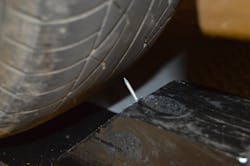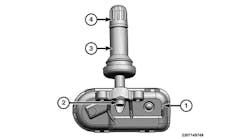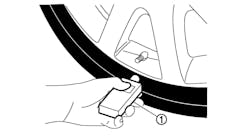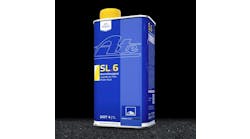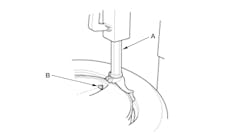Auto club AAA says advances in tire technology aren't leading to a drop in tire-related calls for roadside assistance, and with spare tires becoming increasingly less prevalant in new model cars, AAA wants auto manufacturers to reverse course and bring back the spare tire.
The club says automakers’ decision to eliminate the spare tire may leave more than 30 million drivers vulnerable at the roadside.
Along with run-flat tires, tire inflator kits have replaced spare tires on 29 million vehicles in the last 10 model years, steadily increasing from 5% of 2006 model year vehicles to 36% of 2015 model year vehicles sold. While each four-pound kit eliminates approximately 30 pounds of weight, resulting in minimal savings in fuel consumption, the replacement cost is high. With some kits costing up to $300 per use, a tire inflator kit can cost consumers up to 10 times more than a simple tire repair and has a shelf life of only four to eight years.
AAA also points out the kits have limited functionality, and cannot provide even a temporary fix for many common tire-related problems.
“Flat tires are not a disappearing problem, but spare tires are,” says John Nielsen, managing director of automotive engineering and repair for AAA. “AAA responds to more than four million calls for flat tire assistance annually and, despite advances in vehicle technology, we have not seen a decline in tire-related calls over the last five years.
“Automakers are facing increasingly-stringent fuel economy standards and the spare tire has become a casualty in an effort to reduce weight and boost miles-per-gallon. Advances in automotive engineering allow for weight to be reduced in ways that don’t leave motorists stranded at the roadside.”
Testing the inflator kits
AAA tested the most common tire inflator kits in today’s vehicles and found that the units worked well in some scenarios, but they are not a substitute for a spare tire. For an inflator kit to work effectively, a tire must be punctured in the tread surface and the object must remain in the tire. Used correctly, the kit then coats the inner wall of the tire with a sealant and a compressor re-inflates the tire. If the puncture-causing object is no longer in the tire, a sidewall is damaged or a blowout occurs, a tire inflator kit cannot remedy the situation and the vehicle will require a tow.
“Consumers may mistakenly believe that inflator kits are a one-size-fits-all alternative to installing a spare tire,” says Nielsen. “The reality is these kits can accommodate specific types of tire damage, but having the option to install a spare tire can save stranded drivers time and money.”
Changing the tire
Knowing how to change a tire also is a skill that is now less prevalent among younger age groups. More than one-in-five millennial drivers (ages 18-34) do not know how to change a tire, compared to the nearly 90 % of drivers aged 35-54. Gender differences also exist: while nearly all men (97%) claim to know how to change a tire, only 68% of women boast the same ability.
Vehicles without a spare
AAA compiled a list of vehicles sold without a spare tire. See the list here.
Testing the inflator kits
AAA details its findings and methodology for testing the kits here.
For more information about AAA, visit AAA.com.
